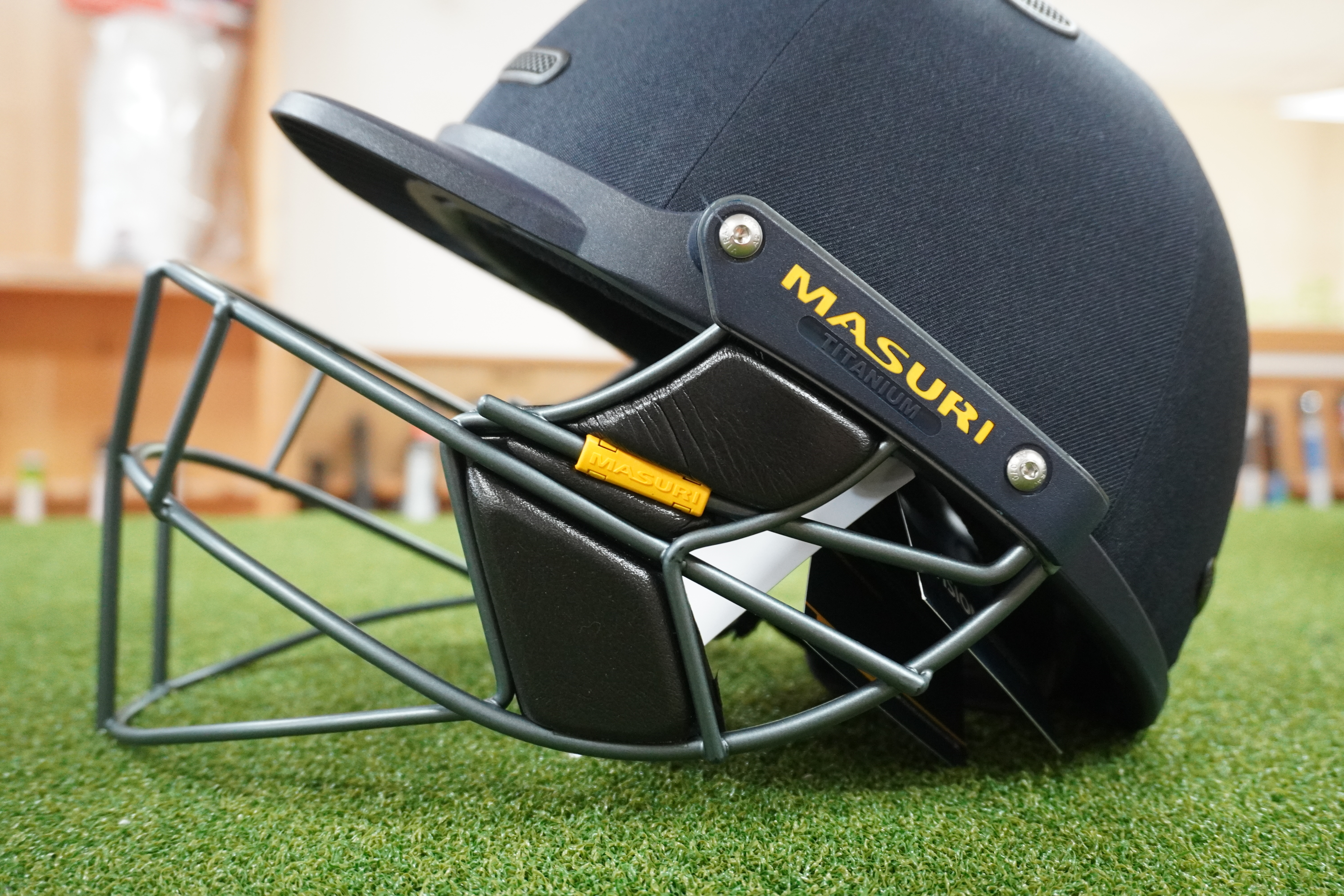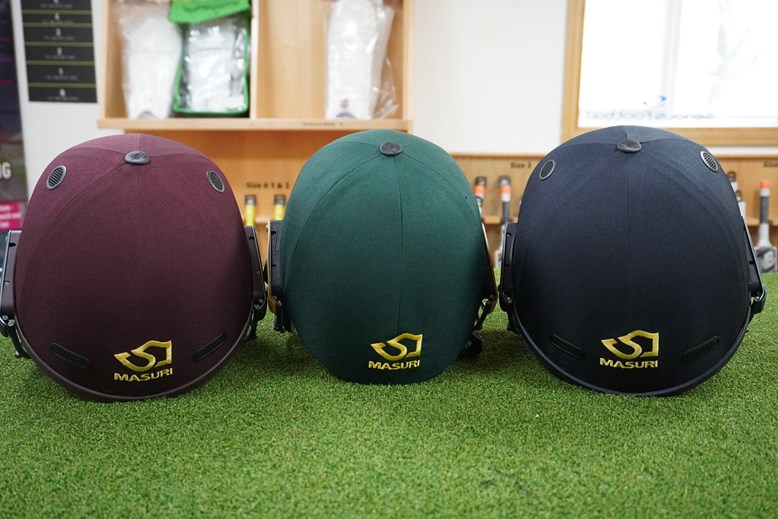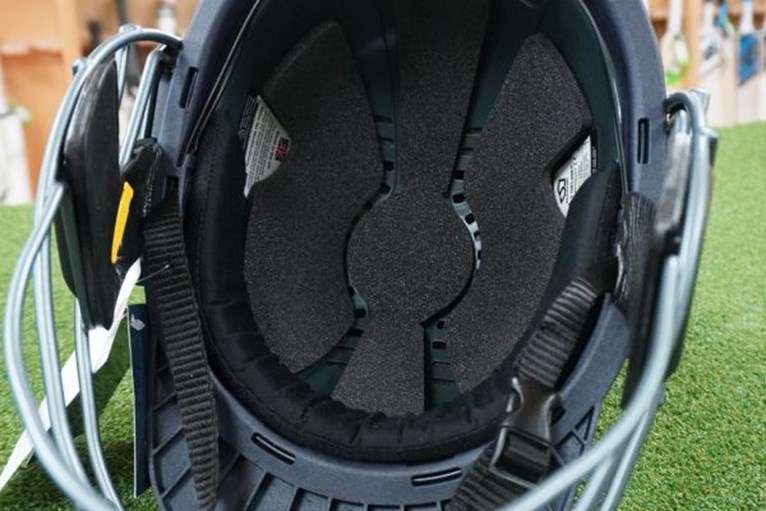How to Choose the Right Cricket Helmet
Need a new lid but unsure on what to choose and how this should fit? In this video, Richard and Neil talk you through all the things to consider when looking to choose a new helmet!

If you are just getting into cricket, there are many things that you will need to consider and selecting the right cricket helmet is certainly one of those. The cricket helmet has become one of the most crucial pieces of protective equipment in the game. Long gone are the days of pace bowlers terrorising lid-less batters with their furious pace and bounce. The first helmets manufactured in the late 70s look very different to the standard helmets you see today, this is due to continual safety standards development.
Need a new lid but unsure on what to choose and how this should fit? In this video, Richard and Neil talk you through all the things to consider when looking to choose a new helmet!
All helmets must be manufactured as per the new British Standard (BSI)-BS7928:2013.
Head protectors should pass the facial contact projectile test, which is done to standardise the faceguard so that no ball can penetrate through it.
All helmets should pass the head protection test. In which the head protectors are tested against, a five and a half-ounce ball and a four and three-quarter-ounce ball.
Pay special attention to these standards while purchasing a new helmet. Helmets that have been tested according to the guidelines of ICC will have a label stating the same. Only use those helmets which are labelled clearly. Most of your major brands have an offering of their own helmets but you also have specialist brands in the field such as Masuri & Shrey, all of which will conform to the safety standards.
It is worth considering the standard of cricket you play. If you are a village cricketer then a more basic functional helmet will suit your needs. If on the other hand you play regularly, and the cricket you play is of a reasonable standard you might want to opt for a helmet with more protection and/or comfort.
Top league cricketers, County Academy cricketers will want the highest level of protection from their cricket helmets.
It makes more sense that if you are a batter who spends a lot of time in the middle or hopes to, you would be advised to spend more on your cricket helmet to ensure that you have a high level of protection and comfort for those long innings you hope to have during the summer.
As a bowler who bats infrequently, we feel you would be better off purchasing a lower-priced version.
You will have the necessary protection but at a fraction of the cost.

Generally, grills are made up of titanium or stainless steel. The former is more widely accepted because titanium grills are lightweight, more durable and offer better strength than stainless steel grills. Grills now come in a standard fix and are no longer adjustable, this regulation was brought in to stop balls from being able to penetrate through the peak and the grill which was causing injuries to the batter. Titanium grills are more expensive but well worth the investment if you’re playing at a high level and batting for long periods of time.
Shells on helmets typically either come in a “painted/hard” or “cloth” finish. Hard shells tend to have more ventilation than cloth-finished helmets. These will also come in different colours, usually navy, green or maroon. There is not much difference between the variations and normally this comes down to personal preference.

Each brand will offer different variations of comfort to its helmets. The specialist brands like Masuri and Shrey will have high levels of padding on the inside of the shell to give maximum comfort when wearing their helmets. Not only this but they will have extra support in the chinstraps, with cups that ergonomically aid the strap to fit comfortably on your chin.

At this point, it is worth noting that, entry-level and top-end helmets will both conform to the safety standards, meaning no helmet is safer than the next. However, as you go up the chain in price, the more lightweight and comfortable the helmets become due to the use of differing materials e.g., titanium grills, fibreglass shells and additional padding.
The cricket helmet should fit firmly on the head. The chin strap should be securely fitted. There should be no front-to-back or side-to-side movement of your head inside the cricket helmet. The chin strap must fit on the player’s chin NOT under it.
If you don't know which size will fit you perfectly, measure your head with a measuring tape. You can do it by keeping an end of the tape in the middle of your forehead, right above the eyebrow, and then completing a full circle by wrapping it around your head. Stop when you reach the centre of your forehead. Just like that, you will know your size.
Choosing the correct helmet is an individual process, no two heads are the same. We always recommend, if you can, to go to your nearest specialist retailer to try on different helmets until you find the perfect fit. If you are unable to get to a retailer, take the time to size yourself up and research into different options that are available to you!
Things to still to consider;
Shrey and Masuri are the two specialist helmet manufacturers in the market. Their level of speciality means they have a larger offering at all levels in the helmet market. More design features are included in the helmet such as aerodynamics for better airflow when running, greater comfort levels have all been considered to make them an attractive alternative to the more functional helmet.
GM, Grays and Kookaburra all offer a functional helmet choice, and they are popular with the junior market and the adult market, and whilst they are functional, they all conform to the necessary safety standards.
Cricket is a game of uncertainty, but you can take control of your protection and reduce your chances of serious injury. We hope that you never have to use your helmet, but don’t forget to lid up safely!